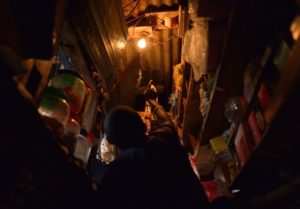
GETTY IMAGES//An electricity grid for the whole village
Problem: A total of 1.3 billion people worldwide currently don’t have electricity, according to Yale Environment 360. Getting people in rural areas onto the national grid is proving too difficult and traditional solar panels generate meager amounts of energy.
Solution: Steamaco makes solar and battery micro-grids that can work for a whole village. They are small electricity generation and distribution systems that operate independently of larger grids.
How it works: Micro-grids are nothing new. The new part is that Steamaco’s technology automates the regulation of electricity.
So, if the system detects there will be a surge in demand for electricity, for example on a Saturday night when people want to start playing music for a party, or they see a dip in supply, like when the sun has gone down and so the grid is not collecting solar energy, then the grid automatically stops electricity for people it won’t affect too badly.
The system sends an automatic text to all customers on the grid saying that the electricity in houses is about to be cut off so that the hospital can keep on going.
Who is talking about this? In October, they were featured in the Global Cleantech 100 Ones to Watch list.
Problem: Pneumonia kills 27,000 Ugandan children under the age of 5 every year. Most of these cases are due to pneumonia being misdiagnosed as malaria.
Solution: Ugandan engineer Brian Turyabagye has designed a biomedical “smart jacket” to quickly and accurately diagnose pneumonia. The Mamaope jacket measures a sick child’s temperature and breathing rate. It can diagnose pneumonia three to four times faster than a doctor and eliminates most possibility for human error.
How it works: A modified stethoscope is put in a vest. It is linked to a mobile phone app that records the audio of the patient’s chest. Analysis of that audio can detect lung crackles and can lead to preliminary diagnoses.
Who is talking about this? It is shortlisted for the 2017 Royal Academy of Engineering Africa Prize.
Read more here


